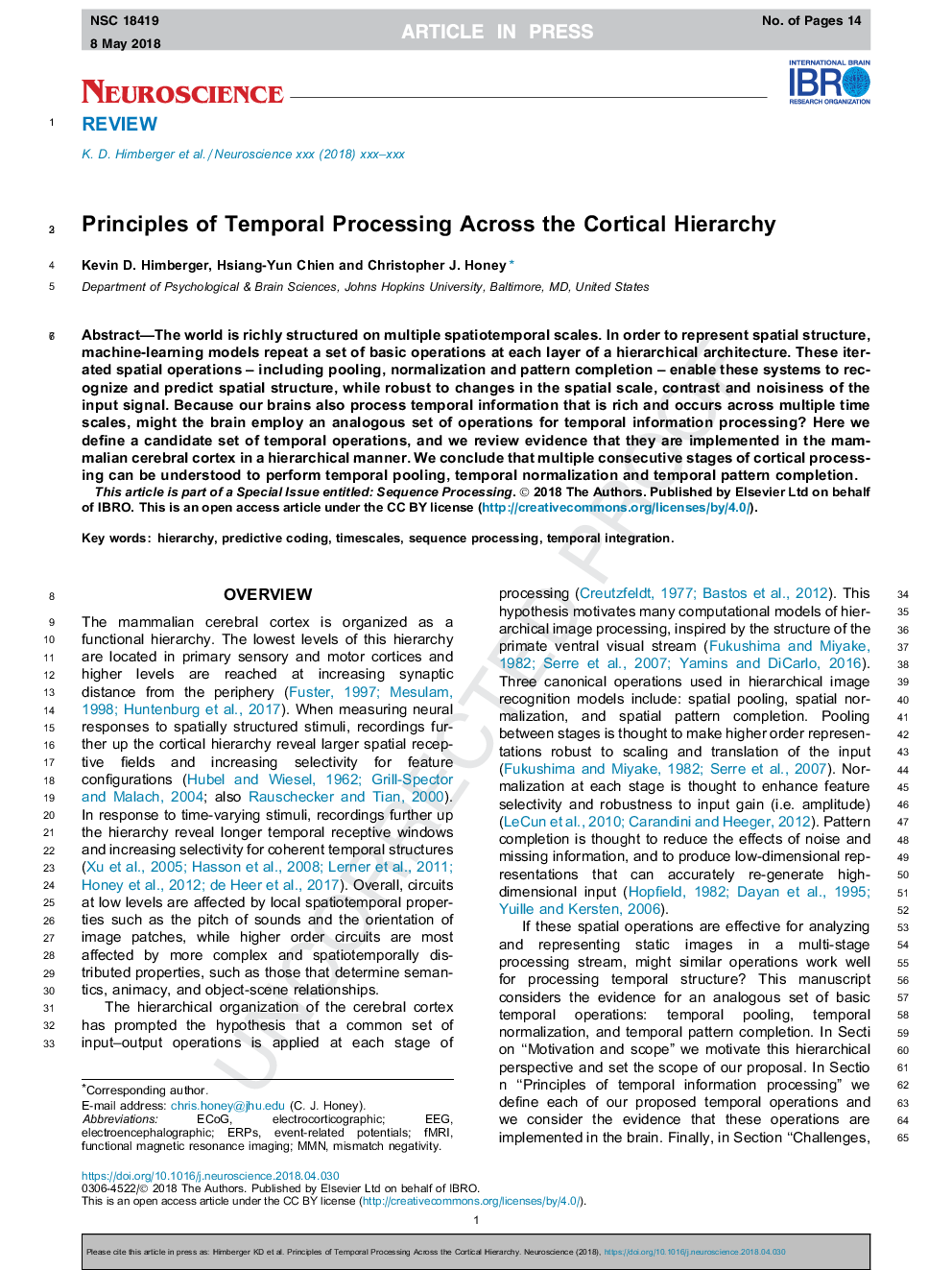| Article ID | Journal | Published Year | Pages | File Type |
|---|---|---|---|---|
| 11017862 | Neuroscience | 2018 | 14 Pages |
Abstract
The world is richly structured on multiple spatiotemporal scales. In order to represent spatial structure, many machine-learning models repeat a set of basic operations at each layer of a hierarchical architecture. These iterated spatial operations - including pooling, normalization and pattern completion - enable these systems to recognize and predict spatial structure, while robust to changes in the spatial scale, contrast and noisiness of the input signal. Because our brains also process temporal information that is rich and occurs across multiple time scales, might the brain employ an analogous set of operations for temporal information processing? Here we define a candidate set of temporal operations, and we review evidence that they are implemented in the mammalian cerebral cortex in a hierarchical manner. We conclude that multiple consecutive stages of cortical processing can be understood to perform temporal pooling, temporal normalization and temporal pattern completion.
Keywords
Related Topics
Life Sciences
Neuroscience
Neuroscience (General)
Authors
Kevin D. Himberger, Hsiang-Yun Chien, Christopher J. Honey,
